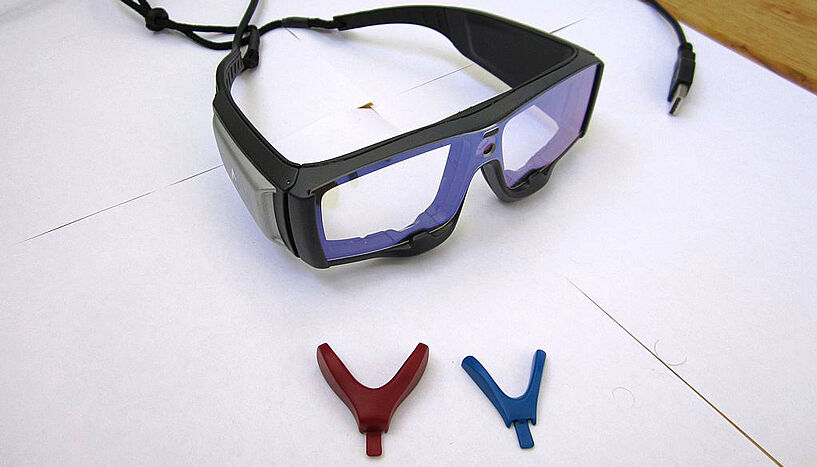Sexual objectification influences visual perception
12. April 2018
By recording eye movements, Silani and her colleagues can achieve are able to confirm, that the "Sexualized Body Inversion Hypothesis" is quite likely (Copyright: By Anatolich1 [CC BY-SA 3.0], from Wikimedia Commons).
It has been suggested that sexually objectified women or men are visually processed in the same fashion of an object. Far from being unanimously accepted, this claim has been criticized by a lack of scientific rigor. A team led by Giorgia Silani, in collaboration with Helmut Leder, of the University of Vienna, and scientists of the University of Trieste and SISSA have explored the conditions under which this phenomenon persists. The results of the study were recently published in the renowned scientific journal "PlosOne".
A controversial hypothesis, named the Sexualized Body Inversion Hypothesis (SBIH), claims similar visual processing of sexually objectified women or men (i.e., with a focus on the sexual body parts) and inanimate objects, suggesting a possible cognitive mechanism behind the consequence of human sexual objectification. Far from being unanimously accepted, this hypothesis has been criticized by a lack of scientific rigor. A team led by Giorgia Silani, in collaboration with Helmut Leder, of the Faculty of Psychology, University of Vienna, and scientists of the University of Trieste and SISSA have explored, in a series of 4 experiments, how low level perceptual features and visual exploration strategies can facilitate or not the occurrence of this phenomenon.
The study
The study used a well-known visual-matching task, in order to detect the occurrence of the inversion effect (i.e the lower performance when stimuli are presented in the unusual upside-down orientation, usually observed when processing faces or human bodies vs. objects) in different stimulus categories: namely sexualized targets, non-sexualized targets and real objects. By varying the low level visual properties of the stimuli, Cogoni and colleagues explored whether this effect is driven by differences in stimulus asymmetry.
The authors observed that symmetry plays a moderating role in shaping the inversion effect, in that presentation of more asymmetrical stimuli (i.e. with a pronounced difference between the left and right side of the image regarding the position of body parts such as arms, legs, ankles) led to lower inversion effect (due to easiness in recognizing the stimuli both in the upward and inverted position), independently from the level of sexualization of the target. Notably a difference in the occurrence of the inversion effect between sexualized and non-sexualized targets emerged when the stimuli were equally difficult to recognize (i.e. when the images were very symmetrical in their position) suggesting indeed the tendency to visually process sexualized individuals more similarly to objects, as indicated by an absence of inversion effect for only sexualized target. By using an eye-tracker devices, the authors could further link this difference to a specific pattern of visual exploration of the images. Indeed, lower number of fixations in the face region of the sexualized target, compared to the non-sexualized, was detected, suggesting a deviation from the face to other body parts as a possible mechanism for the Sexualized Body Inversion Hypothesis.
Publication in PlosOne:
"Understanding the mechanisms behind the sexualized-body inversion hypothesis: the role of asymmetry and attention biases."Carlotta Cogoni, Andrea Carnaghi, Aleksandra Mitrovic, Helmut Leder, Carlo Fantoni, Giorgia Silani
https://doi.org/10.1371/journal.pone.0193944
Wissenschaftlicher Kontakt
Assoz. Prof. Giorgia Silani
Klinische Psychologie und Gesundheitspsychologie; Institut für Angewandte Psychologie: Gesundheit, Entwicklung und FörderungUniversität Wien
1010 - Wien, Liebiggasse 5
+43-1-4277-472 23
giorgia.silani@univie.ac.at
Rückfragehinweis
Stephan Brodicky
Pressebüro der Universität WienUniversität Wien
1010 - Wien, Universitätsring 1
+43-1-4277-175 41
+43-664-60277-175 41
stephan.brodicky@univie.ac.at
